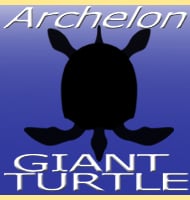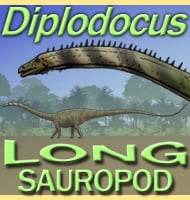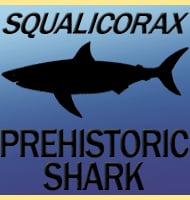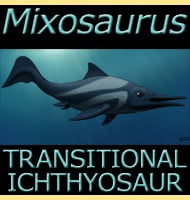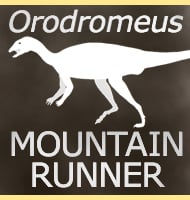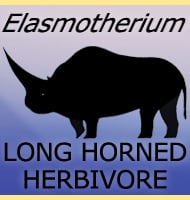Today sharks are a source of both fascination and fear for people but one fact about them that is still often overlooked is that they are one of the oldest types of animal on the planet. Also while the sharks of today form a critical part of the oceanic ecosystem they are no way near as bizarre or outright terrifying as some of their prehistoric ancestors.
Early beginnings
The first indication of sharks in the fossil record dates all the way back to the late Silurian period, possibly as much as four hundred and fifty million years ago. Unfortunately the only evidence that exists is scales from genera such as Elgestolepis, Mongolepis and Polymerolepis, but these scales are still well enough preserved to indicate that these fish were sharks.
Shark fossils become much more common in deposits from the Devonian, possibly reflecting growing success at survival. A greater number of sharks swimming in the Devonian waters would after all leave a proportionately higher amount of fossils. Already some of these sharks had developed a basic shark profile, with some like Cladoselache having a long torpedo shaped body and well developed fins for fast and agile swimming. However these sharks were still developing in the shade of other predators that meant they kept small and relied on speed for both hunting and avoidance of more powerful hunters like the arthrodire placoderms. However the disappearance of these predators at the end of the Devonian seems to have opened up the way for sharks to move beyond their more humble beginnings.
Shark diversification- The classic and the bizarre body forms
The Carboniferous & Permian periods saw the sharks evolve into what are possibly some of their most bizarre forms. In fact some of these forms were so strange that they would have made the hammerhead shark that we know today seem totally normal. Most famous of these is probably Helicoprion which had its teeth arranged in a strange spiral ‘tooth whorl’ that is thought to have extended from its lower jaw. It is unknown how exactly this whorl was used and upon what prey, but similar forms include Ornithoprion and Sarcoprion. Both these sharks have semi-circular arrangements of teeth in their jaws, and it’s possible that they may have been for rasping through prey to saw off bite sized chunks.
The mystery of the tooth whorl of Helicoprion may be connected to another shark named Edestus, better known as the ‘scissor-toothed shark’. Edestus acquired this nickname from the fact that its teeth were not shed like in other sharks and the jaws steadily grew throughout its life. This meant that the inner jaws with their teeth were constantly pushed forward throughout it life so that its outer most teeth pointed forwards rather than up and down like other sharks. If Helicoprion’s jaw grew in a similar manner then it may have started out small, but steadily curled round as the shark grew. This might even suggest that rather than being used for hunting it was a display indicating the maturity of the individual.
One group of sharks that were very different to those we know today are the xenacanthids. These sharks developed eel like bodies that were better suited for navigating the freshwater swamps that were clogged with submerged debris. Additionally, rather than having dorsal fins they instead had a single spine that rose up from the back of the head. This is usually interpreted as being for defence from larger fish as well as large amphibians.
Some sharks that did have dorsal fins had highly unusual ones. Briefly going back to the Devonian period and a shark called Stethacanthus had an anvil shaped dorsal fin that had growths of tooth like denticles on top of it (as well as a similar mat of denticles on top of its head). This dorsal fin is why Stethacanthus is sometimes called the ‘anvil shark’, or ‘ironing board shark’, with theories for the unusual dorsal fin ranging from a method of intimidating predators to same species recognition, but it remains hard to be certain without seeing the living creature. Another shark with an unusual dorsal fin is the small thirty centimetre long Falcatus that had a forwards horizontally pointing point projecting from the top of its dorsal fin and over its head. However the function of this dorsal fin is easier to determine with confidence as this dorsal fin only appears to have been on male Falcatus. This makes it almost certain that the dorsal fin of Falcatus was for the purpose of attracting a mate with perhaps the most developed spike being the most attractive to the female Falcatus.
Spiny Sharks
Before moving on another group of fish similar to the sharks are those referred to as ‘spiny sharks’. These actually appeared back in the Silurian period and rose to prominence during the Devonian and Carboniferous periods. As cartilaginous fish the spiny sharks were related to sharks, but were not true sharks themselves. Spiny sharks are so named from the well developed and often numerous spines that projected from their bodies, presumably for the purpose of defence as these spines would make it both difficult and painful for a predator to close its jaws around them. Spiny sharks also appear to have been among the first fish to actually develop jaws, as earlier fish similar to Cephalaspis (which itself is actually known from the early Devonian period) are often referred to as jawless fish.
Spiny sharks were successful fish for their day, producing a variety of forms as well as colonising both sea and freshwater environments. However it would seem that combined competition from true sharks as well as bony fish reduced the numbers of spiny sharks to the point that they disappeared at the end of the Permian, before the start of the Mesozoic era. It’s also plausible that the extinction event that marks the end of the Permian may have also been responsible for their total disappearance.
The Mesozoic
Between the start of the Triassic and end of the Cretaceous the sharks continued to thrive, some in forms that are much more familiar to us today. Hybodus is probably the greatest success story here with a worldwide distribution as well as temporal range that stretches from the end of the Permian through to the early Cretaceous. In addition to these feats Hybodus also survived the mass extinctions at the end of the Permian and Triassic periods, the latter being a particularly bad one as far as marine life in concerned. Success for Hybodus is thought to have come from its ability to adapt to different types of prey thanks to its combination of sharp piercing teeth as well as rounded crushing teeth.
Other sharks of the time also appear to be quite modern with Scapanorhynchus resembling a goblin shark, while Squalicorax and Cretoxyrhina both appearing to be oceanic sharks well suited to a pelagic life. With more standard forms now established they had almost reached their full potential with successful body forms that are so perfect for aquatic life they have barely changed since. Shark diversification did not come to a complete halt however, as the Mesozoic sharks simply became better adapted to hunt other marine animals. Modifications now were along the lines of such things as different teeth for different kinds of prey such as thin pointed teeth for fish, serrated triangular teeth for large prey or rounded plate like teeth for crushing shells.
Shark giants - The megatoothed sharks
People have always had a particular fascination with large sharks, although usually they envision the great white shark (Carcharodon carcharias) which is the biggest predatory shark in the ocean today, while others like the whale shark are bigger but are filter feeders of plankton. However both of these sharks pale in comparison to the giant sharks that lived from the Oligocene to Pleistocene periods.
The most famous of these sharks is C. megalodon, often just referred to as megalodon, which is now well known all over the world thanks mainly to it appearing as a star monster in an ever expanding number of films and stories. Despite its current fame C. megalodon is actually late to the party, with it being recognised as a distinct species as far back as 1843, and teeth documented in scientific journals as far back as the end of the renaissance. With minimum size estimates averaging fifteen meters long, C. megalodon was the largest and last of the megatoothed sharks, but the ones that came before it such as Otodus and C. angustidenss are also estimated at being around nine meters long themselves.
Two problems persist with our understanding of the megatoothed sharks, the first one being how big they grew. With the exception of a few vertebrae, only the teeth are known, so size is usually determined by scaling these in comparison to other sharks that are alive in the ocean today. Unfortunately to muddle things further there are a number of different methods of comparison, some such as measuring slant height of a tooth (the length between the tip and outer edge of the tooth) to the amount of enamel that is on it, as well as others. Most of this research has been directed towards C. megalodon as it has the largest teeth, and therefore was the largest shark. C. megalodon is usually compared to the great white shark as it is thought to be the closest thing to a C. megalodon still swimming in the ocean. Depending upon the size of the teeth and the method involved estimates for C. megalodon usually range between fifteen and twenty meters, sometime more, but most researchers agree that the science is not exact and is best for just a more general indication of the total size.
The second problem with the later megatoothed sharks such as C. megalodon, C. auriculatus, C. chubutensis and C. angustidens is exactly which genus they should be placed in. As you may have noticed these species have been referred to as ‘C.’, and this is because while many people place them in the Carcharocles genus, separate from modern sharks. Other people however place them in the Carcharodon genus along with the great white shark, on the grounds of slightly similar teeth and the fact that the great white is the biggest predatory shark in the ocean today. Most today seem to lean towards the Carcharocles placement as while the teeth of sharks like C. megalodon, do bear a superficial resemblance to the great white, closer inspection reveals a number of differences. What can be said however is while it is almost certain that the great white shark is not descended from currently known megatoothed sharks, it may have shared a common ancestor with them.
Shark fossils
The most common shark fossils are without a doubt the teeth. Made from dentine and coated with enamel, teeth are extremely resilient to the processes of decay and fossilisation. Teeth are often so well preserved that not only can serrations be clearly seen; they can even remain sharp enough to cut skin if handled carelessly. Teeth are usually found individually, sometimes coming away from the surrounding rock, while other times they are deliberately left on part of the original rock. Very rarely however teeth are found in whole jaw concentrations, sometimes even with part of the jaw preserved.
Teeth fossils can reveal a lot about a sharks lifestyle and predatory behaviour, especially when they are compared to similar sharks that are alive and swimming in today’s oceans. For instance Squalicorax has triangular teeth with serrated edges for sawing off chunks of flesh from larger prey, while the narrow pointed teeth of Scapanorhynchus are perfect for piercing the soft bodies of smaller fish. The rounded teeth of the ten meter long Cretaceous shark Ptychodus however show that it crushed the shells of armoured prey like shellfish and crustaceans.
To a lesser extent than the teeth, shark vertebrae are still quite well known. However because vertebra are made from ossified cartilage they are more susceptible to decomposition, which means unless a dead shark can be covered quickly in sediment, the vertebrae can quickly decompose. This can easily be seen in recovered specimens of vertebrae which had already partially decomposed when they were fossilised resulting in incomplete preservation. Sometimes vertebrae are found still lined up together to reveal portions of the spine, up to the point where the length of the shark can be reasonably determined.
Much more valuable yet also incredibly rare are impressions that reveal the shape and internal structure of a sharks cartilaginous skeleton. The best known shark impressions belong to Cladoselache which are so well preserved that they even reveal impressions of the internal soft tissue and organs as well as the sharks last meal. This reveals important information on how similar today’s sharks are to their ancient forbears as well as their feeding habits.
Other impressions have revealed body features that otherwise would have gone unknown to science. Impressions of Stethacanthus for example revealed its anvil shaped dorsal fin, the mat of toothy denticles on top of its head and the cartilaginous tendrils that trail from its pectoral fins. None of these features could have been described from examining its teeth alone. Most impressions however are for smaller species of shark, which unsurprisingly are easier to bury than larger forms. At best larger sharks that are well above two meters long seem to be preserved in parts, and usually just areas like the jaw and vertebrae.
Prehistoric sharks as predators and prey
Although sharks are popularly dubbed the top predators of the ocean today, in the past they were just as likely to have found themselves to be the prey as the predator. Most of the documented shark evolution seems to have been driven towards becoming more effective predators so that they could more easily kill a greater variety of animals while living in waters that periodically saw the emergence of new kinds of predatory creatures. Some sharks went along the lines of direct competition with these hunters, such as the pelagic carnivorous sharks that took what they could get, to specialised forms that focused upon eating certain kinds of animals or hunting in very specific ways.
The xenacanthid sharks seemed to have preferred the freshwater swamps and waterways that would have been overgrown with aquatic plants and debris from above. The xenacanthids were almost certainly not the only fish swimming these waters with other fish types providing bountiful prey. Also in the water were tetrapod amphibians and more importantly juveniles in their larval stages. It would seem that a good portion of these amphibian juveniles were restricted to the water because of the larval stage features that meant they could not crawl onto land to escape predators. Evidence that larval stage amphibians were prey to ancient sharks comes from the xenacanthid Triodus that was found with the remains of one inside its body. The sinuous bodies of the xenacanthids meant that they could lurk amongst the submerged debris as well as work their way into tight areas to search for hidden prey.
Some of the best indications of prey animals comes from well preserved specimens of Cladoselache dating from the Devonian. These fossils are so well preserved that it is actually possible to identify the exact kinds of animals that were eaten. In the case of Cladoselache, the preferred prey items were by far ray finned fish that Cladoselache would have easily been able to catch with its streamlined body. The fossils also show that Cladoselache would feed upon other animals including conodonts (primitive eel like fish), arthropods and what appears to have been another shark.
This briefly brings up the subject of sharks eating other sharks. Many sharks are thought to eat other sharks especially if the shark being eaten is much smaller than the aggressor. Young sharks that are still in their mother’s body are also known to eat each other before birth as well. How often cannibalism in sharks occurs is a matter of strong debate, for as long as food sources are plentiful it may be never. With reduced food supplies it may become frequent, especially if a shark is sick or wounded and is giving out the distress signals to other and healthier sharks which then perceive it to be a prey item.
Back in the Devonian period sharks would have often found themselves prey to huge arthrodire placoderms like Dunkleosteus. However while the placoderms were the dominant predators, they did not survive for long as their remains disappeared at the end of the Devonian. This probably helped bring about the great diversification of sharks in the Carboniferous period that saw many new feeding designs developed. Although not the only predatory fish of the time, Sharks probably played a key role in dominating the late Palaeozoic seas. However the Permian period would see the beginnings of a new challenge in the form of small reptiles like Hovasaurus evolving for aquatic life.
The Mesozoic era that began at the end of the Permian with the start of the Triassic and lasting until the Cretaceous, would see the continued development of marine reptiles in the form of ichthyosaurs, plesiosaurs, pliosaurs and mosasaurs. Some of these marine reptiles like the icthyosaurs and plesiosaurs would have been more competition to the same prey sources as sharks had. The pliosaurs and mosasaurs however were dedicated killers of large prey and would have thought nothing about adding a shark to the menu.
Despite this new competition the sharks continued to hold their own in the face of these new predators. Some like Hybodus would become generalists that could feed upon a variety of different prey types. Evidence for this comes from the fact that Hybodus had sharp teeth at the front for seizing fast prey like fish and squid, while also having blunter crushing teeth best suited for cracking the tough exoskeletons of crustaceans.
Other sharks like Scapanorhynchus would become deep water specialists. By staying down in the black, Scapanorhynchus would have been out of sight and possibly out of range of the marine reptiles that still had to surface to breathe air. This behaviour is suggested by its extended snout that would have contained a larger number of electro-receptive ampullae that would not have been possible in a smaller area. These ampullae would have sensed the electric fields of nearby fish allowing Scapanorhynchus to find prey without even having to see it. This exact behaviour is seen today in the Goblin shark which also has teeth that are almost identical to Scapanorhynchus. Also the shellfish eating shark Ptyhocodus would have most probably lived a benthic life near the bottom where its preferred prey would have been. This would have seen it living in a position that probably had limited contact with marine reptiles while feeding on animals that were too tough for other sharks, such as the giant clam Inoceramus.
One final strategy of sharks to exist in the same oceans as the massive marine reptiles was to simply grow bigger themselves. The best example of this was Cretoxyrhina which was probably ‘the’ killer shark of its day. At seven metres long Cretoxyrhina was a bit bigger that the largest officially recorded great white shark (which is a bit over six meters). Cretoxyrhina also has the nickname ‘ginsu shark’ because its teeth seem to have been able to cut through anything. This is because not only are Cretoxyrhina teeth sharp, they have a considerably large amount of enamel coating making them just as useful for cutting into bone and shell as they were flesh. Fossil evidence also shows that Cretoxyrhina went so far up the predatory scale that it also included plesiosaurs as well as the dangerous mosasaurs in its diet.
Popular fiction sometimes depicts epic battles between sharks and dinosaurs taking place but unfortunately there is very little evidence to suggest interaction between these two animal groups. The best recorded evidence for a shark eating a dinosaur comes from a tooth of the shark Squalicorax that was found embedded in the foot bone of a hadrosaurid dinosaur. The majority of researchers believe that the dinosaur would have been swept out to sea and drowned, and that Squalicorax was simply taking the opportunity of a free meal.
Sharks proved their resilience again in the extinction sixty-five million years ago that marked the end of the Mesozoic, the dinosaurs and their great rivals of the time the marine reptiles. Again the sharks found themselves the dominant predators, but they would soon be challenged again, Not only were mammals slowly becoming the dominant life forms on land they were also expanding into the ocean as evidenced by Pakicetus and Ambulocetus.
Sharks on their part did not face a significant threat from these new kinds of marine animals, in fact fossil evidence suggests that the sharks treated the new marine mammals as a wholly new food source. As the mammals grew bigger, so did the sharks until a new line of giant megatoothed sharks were swimming the oceans.
The most famous of the megatoothed sharks was C. megalodon, currently known as the largest shark to ever swim the oceans. C. megalodon seems to have evolved from a large shark pedigree going back to the twelve meter Otodus to C. auriculatus, and C. angustidens. C. megalodon itself has a small average length of fifteen meters making it two and half times larger than the biggest great white shark. C. megalodon also had the teeth for work on medium to large sized whales that it could bite chunks from with relative ease.
This predation of new animals was not one sided however as the early aquatic mammals also evolved into predatory whales like Basilosaurus and Livyaten. Both of these whales lived at different times, with Basilosaurus being much earlier in the fossil record, but they like others evolved to hunt other whales. They also would have been capable of killing other animals including sharks and even challenging the larger sharks for dominance.
Despite the presence of giant sharks like C. megalodon and the increase in large predatory whales, both types of animals coexisted with one another due to the abundance of large prey items. However it was nature that ended the dominance of both kinds of predator with colder oceans and dropping sea levels that restricted ocean currents and movement. This caused a drop in prey species that meant the giant sharks and predatory whales no longer had sufficient food to live.
Today the only remaining large predatory whales are the sperm whale which feeds in deep water for animals like squid, and the Orca which can adapt to hunt different kinds of prey. Sharks have continued to survive on a similar strategy of being generalist carnivores that adapt to different prey types. The fossil record shows us that generalisation is the best insurance against extinction with specialists such as the bizarre Helicoprion to the gigantic C. megalodon not surviving the test of time. In contrast the generalist Hybodus survived for over one hundred million years before it finally vanished.
List of some prehistoric sharks
| Acanthodes (spiny shark) Acrodus Akmonistion Anodontacanthus Anomotodon C. megalodon (often just called ‘Megalodon’) Carcharocles angustidens Carcharocles auriculatus Carcharocles chubutensis Cardabiodon Cobelodus Cladoselache Climatius (spiny shark) Cretoxyrhina Ctenacanthus Dicentrodus Diplodoselache Edestus Elgestolepis Erquitaia Falcatus Galeocerdo contortus Glikmanius Hagenoselache Helicoprion | Hemipristis Hybodus Iniopteryx (a chimaera) Leonodus Mongolepis Ornithoprion Orthacanthus (xenacanthid) Otodus Physogaleus Plicatodus Polymerolepis Priohybodus Ptychodus Reginaselache (xenacanthid) Sarcoprion Scapanorhynchus Sphenacanthus Sphenonchus Squalicorax Stethacanthus Triodus (xenacanthid) Tristychius Wodnika Xenacanthus (xenacanthid) |

